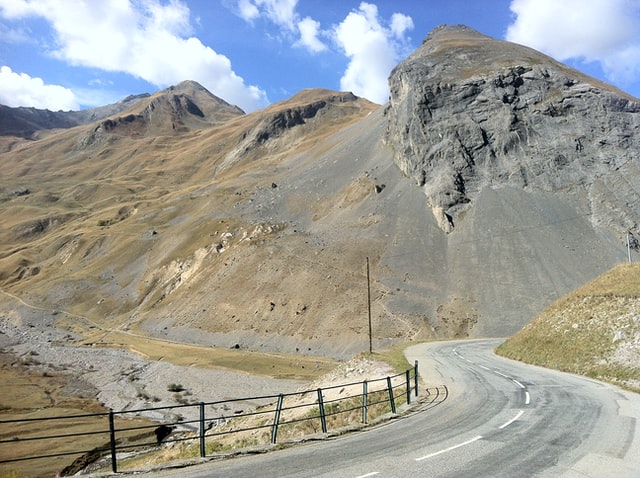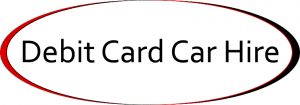
France is one of the most visited countries in Europe and indeed, the world. Famous for its countryside landscapes and also its coastal roads, many choose France for road trips whether they’re coming from the UK, Europe or further afield.
There have been a few changes to requirements to driving in France in recent years, particularly if you’re coming from the UK. In this France driving guide, we’ll detail all you need to know in terms of rules and regulations for driving in France and what you’ll need to have with you at all times. Driving In France doesn’t have to be difficult, especially if you know the driving rules and the country specifics.
What Do I Need to Drive in France in 2023?
Below is a list of items required to bring with you when driving in France in 2023.
- Full, valid driving licence. Domestic driving licences are accepted in France as long as they’re written in the Roman Alphabet. If your driving licence is written in any other language, you must have an international driving licence.
- Proof of ID (passport)
- Motor insurance certificate
- V5 registration document
French Road Info
The motorway in France is called “autoroute”. France’s road network consist of more than 11,000 km of motorway, with autoroutes numbered systematically as shown below:
- A1, A3, A4, A5, A6, A10, A13, A14, A15, A16 start from Paris
- A20’s are located in northern France
- A30’s are located in eastern France
- A40’s are located near the Alps
- A60’s are located in southern France
- A70’s are located in the centre of the country
- A80’s are located west of Paris
Here are the most important motorways in France
- A1 ~ Northern motorway
- A4 ~ Eastern motorway
- A6 and A7 ~ Motorways of the Sun, they connect the north to the south
- A8 ~ La provencale as it cross Provence
- A10 ~ L’Aquitaine connects Paris to Bordeaux
- A13 ~ Normandy Motorway
- A20 ~ L’occitane as it leads to the south-west of France
- A26 ~ autoroute des Anglais as it leads from Calais to Champagne region
- A29 ~ route des Estuaires, crossing the estuaries of the English Channel
- A40 ~ white motorway leads to Chamonix and other French winter resort towns
- A62 and A61 ~ the two seas motorway. They connect the Atlantic Ocean and the Mediterranean Sea from Bordeaux via Toulouse to Narbonne
- A68 ~ autoroute du Pastel connects south of France with Albi
- N104 ~ one of Paris’s beltways
General Driving Rules in France
- Speed limits in France 2023 are:
- 50km/h in towns and built-up areas
- 80km in main roads outside built-up areas
- 110km on dual carriageways
- 130km on motorways
- Unlike the UK, it is illegal in France to use devices that warn drivers of speed camera locations.
- The alcohol limit in France is split between drivers with less than three years experience (0.2g/litre) and those with more than three years experience (0.5g/litre), lower then than our own 0.8g/litre limit.
- Do not wear headphones when driving in France
- Clean air stickers are a legal requirement in some cities and Low Emission Zones across the across. These require a sticker called Crit’Air (Certificats qualité de l’air = air quality certificates) which are compulsory for French and foreign vehicles.
- If you have a breakdown in France, you need to use the roadside orange phones to call the police or a regional breakdown company
- Don’t put children in the front seat if they’re under the age of ten, unless you are using a special child restraint adapted for their age and size (check European regulations for this)
Violating traffic regulations in France can land you an on the spot fine of up to EU 750. This can be reduced if paid within the next three days or, if disputed, taken to court within 30 days. For serious offences, a deposit may be required or your vehicle may be confiscated. Crimes will follow you back to the UK if not dealt with during your visit.
There is lots of availability of unleaded petrol, diesel fuel and lubricating oil in France. Automated petrol pumps are operated by debit or credit card and there is an increasing number of electric charging points.
Overtaking in France
- Generally, the rule is to drive on the right and overtake on the left. But when there are slower vehicles in left-hand lanes these can be overtaken on the right.
- Vehicles travelling uphill on steep gradients have right of way over those travelling downhill.
- Trams are normally overtaken on the right but can be passed on the left if there is not enough space on the right on a one-way street.
- Unless otherwise indicated at intersections you should give way to cars coming from your right.
- Traffic already on a roundabout has right of way.
- Emergency vehicles have right of way.
- Don’t get horny! Use only as an imperative warning to other drivers and not in built-up areas unless danger is imminent.
Traffic Lights and Tolls
- France uses the three-colour traffic light system with red for stop, amber for stop if possible (not too near line) and green for go.
- When the amber light flashes you must give way to vehicles coming from the right.
- When passing through toll gates on the motorway fees are paid either by cash, credit card or electronic unit or a mobile app. If this is going to be a regular part of your French trip you may want to use Liber-t electronic unit.
Further Vehicle Requirements for Driving in France
- Vehicles registered in the UK must display the letters “UK” when driven in France.
- A French driving kit will have all the items you need and will ensure you avoid hefty on the spot fines. This includes:
- Reflective jackets for each person in the car
- Warning triangle in the event of a breakdown
- Headlamp beam deflectors
- Breathalysers
- Spare bulbs
- First aid kit
Whether you’re a Francophile or not, you are now up to scratch with the key factors to make your driving break in France as hassle free as possible. Check out how to make the trip even smoother by hiring a car with a debit card in France.
Looking for more inspiration? Check out our road trip guide:
You will need to display a UK sticker as the previous GB ones have been discontinued.
Yes, you will need to carry a breathalyser kit in your car when driving in France.
“Rappel” is a common word used under speed limit signs in France. It’s a reminder that you’re still in the same speed zone.
Toll booths in France are generally reasonably priced though this does of course depend on how long your journey is.
Yes, you can still hire a car and drive in France with your UK licence after Brexit, as long as it’s valid and in date.
